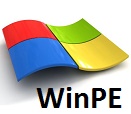

The following is a walkthrough of the steps required for creating a bootable USB stick using the commandline Diskpart tool. The actions include wiping the disk before creating and formating a new partition and making the partition active - as this could potentially result in data loss make sure that the correct disk is selected. Diskpart works by targeting an object (either a disk, volume or partition) - making it have "focus" (see here).
The drive will need to be manually selected. Use the command List disk to show all available disks -

It should be possible to identify your USB stick based on it's size or other attributes. In this walkthrough the "target" was identified as disk 1. Select disk 1 by entering the command sel disk 1 -

To double check the correct disk has been selected, use the command detail disk to display more detailed attributes -

Use the clean command to wipe the disk (a limited number of sectors will be erased - removing all partition information and effectively wiping the whole disk). Alternatively the command clean all could be used to zero the whole of the disk. As either of these commands will for all intents and purposes delete everything on the selected drive, make sure this is your USB stick and not your hard drive before proceeding! -

To create a primary partition using all available disk space, use the command create partition primary

The remaining tasks need to be carried out on the newly created partition. Use the command select part 1 to select the new partition -

Use the active command to make the partition bootable -

To (quick) format the selected partition with...

To mount the new partition (to assign a drive letter) use the command assign -

For an alternative to diskpart, you could use the following -